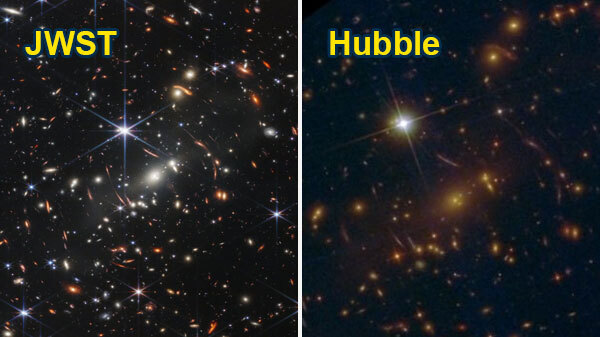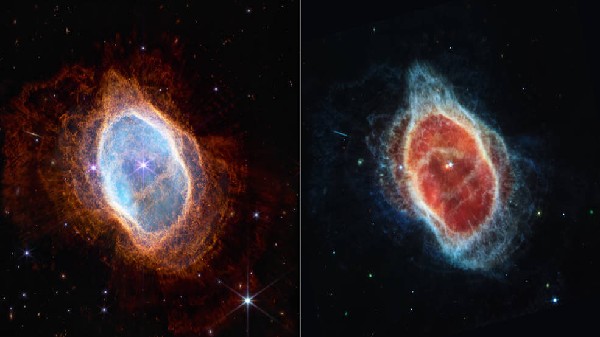Just In
- 37 min ago

- 40 min ago

- 1 hr ago

- 1 hr ago

Don't Miss
- Sports
 Boria Majumdar: 'He Lied Through His Teeth'; Deserves Apology From Cricketer For Social Media Abuse
Boria Majumdar: 'He Lied Through His Teeth'; Deserves Apology From Cricketer For Social Media Abuse - News
 Lok Sabha Elections 2024: What Are The Expectations Of First-Time Voters?
Lok Sabha Elections 2024: What Are The Expectations Of First-Time Voters? - Movies
 Game Changer: Ram Charan's Remuneration For Director Shankar's Hyped Bilingual Political Drama Will SHOCK You
Game Changer: Ram Charan's Remuneration For Director Shankar's Hyped Bilingual Political Drama Will SHOCK You - Automobiles
 Nissan Magnite Achieves 1 Lakh Unit Sales Milestone: Consistency Helps
Nissan Magnite Achieves 1 Lakh Unit Sales Milestone: Consistency Helps - Education
 West Bengal Madhyamik Result 2024: Check How to Download 10th Marksheet on wbresults.nic.in
West Bengal Madhyamik Result 2024: Check How to Download 10th Marksheet on wbresults.nic.in - Finance
 Sakuma Exports Secures Rs. 150 Cr Deal; Okays Rights Issue Amidst Positive Outlook
Sakuma Exports Secures Rs. 150 Cr Deal; Okays Rights Issue Amidst Positive Outlook - Lifestyle
 Arushi Sharma-Vaibhav Vishant Wedding, Love Aaj Kal 2 Actor Looks Resplendent In A Pastel Ethnic Outfit, Pics!
Arushi Sharma-Vaibhav Vishant Wedding, Love Aaj Kal 2 Actor Looks Resplendent In A Pastel Ethnic Outfit, Pics! - Travel
Kurnool's Hidden Gems: A Guide To Exploring India's Lesser-Known Treasures
How James Webb Space Telescope Paid Off NASA's 25 Years Of Work
NASA’s James Webb Space Telescope (JWST) finally beamed back its first set of images for astronomers and space enthusiasts. These are full-color images, and astronomers across the globe were taken aback by the details they had to offer. Many even told reporters that they got emotional looking at the pictures.

The new images of deep space shed light on countless galaxies, stars, and fine details that even the legendary Hubble Space Telescope failed to capture. These images provide insight into the birth and collapse of stars with great details, and new colors, and go way beyond what any infrared telescope has ever done.

James Webb Space Telescope Proving Its Worth
These images were previously taken by the Hubble Space Telescope as well back in 1990. But JWST has breathed a new life into these pictures, paying off NASA’s over two decades of work and around $10 billion of investment.
The first image taken from JWST showed a long exposure, giving astronomers a sneak peek of what the new space observatory has to offer. These new images show the optical prowess of the new telescope and how sharper and stronger images it can capture of the universe.
"We're making discoveries, and we really haven't even started trying yet," Eric Smith, chief scientist of NASA's astrophysics division, said in the briefing.

Never-Seen-Before Details Of Southern Ring Nebula
The image captured from JWST clearly shows two stars at the center of this nebula, whereas the image captured from the Hubble Space Telescope shows only one.
The Southern Ring Nebula is a dying star that has already imploded and the image shows that it’s slowly expelling the layers of its atmosphere in waves. This phenomenon creates bubbles of colorful gas that keep expanding. While the scientists were aware of the presence of another star at the center of the nebula, they didn’t have any conclusive evidence, until now.
This JWST image shows a red glow around the dying star because it is surrounded by dust, just beside its white companion star.

Sharp Image Of A Galaxy Cluster
In another image captured by JWST’s lens, a cluster of five galaxies can be seen. Four of them are around 300,000 light-years away.
They are believed to be locked in a cosmic dance as each galaxy’s gravity has some impact on another galaxy. The new space observatory has managed to capture huge shock waves as one of the galaxies, NGC 7318B, smashes through the cluster.
-
99,999
-
1,29,999
-
69,999
-
41,999
-
64,999
-
99,999
-
29,999
-
63,999
-
39,999
-
1,56,900
-
79,900
-
1,39,900
-
1,29,900
-
65,900
-
1,56,900
-
1,30,990
-
76,990
-
16,499
-
30,700
-
12,999
-
14,999
-
26,634
-
18,800
-
62,425
-
1,15,909
-
93,635
-
75,804
-
9,999
-
11,999
-
3,999











































